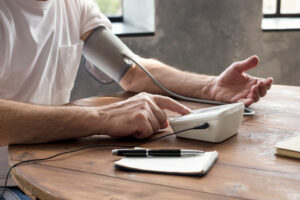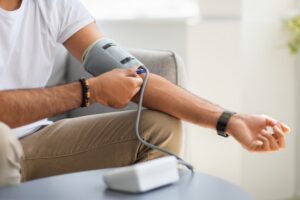Did you know that most people don’t notice their feet until they start to hurt and interfere with everyday life? One of the most common foot conditions that deform the foot is hammertoe, also known as a mallet toe. This causes an unnatural bend of one or more joints of an affected toe. Typically, it is related to an imbalance in the ligaments, tendons, or muscles that keep the toe straight, which causes a bend in the toe. This puts unnatural stress on other areas of the toes and feet, interfering with the ability to walk and impacting your quality of life. While it is treatable, even in advanced stages, sometimes it can cause severe complications. Noticing hammertoe symptoms not only prevents complications but also the need for surgery to fix your toe. Learn the early signs of hammertoe that you should not ignore in this article. Get a consultation with the best Podiatrists in Brooklyn.
5 early signs of a hammertoe
These are the 5 signs of hammertoe you should not ignore:
- Curled toes:
The most common sign of hammertoe is the physical deformity of your second, third, or fourth toe. This condition causes the toe to bend from the middle joint upwards, while the end of the toe bends downwards. Over time, it gives you the appearance of a hammer or claw. In the initial stages, this bending is flexible, so you can straighten your toe with little force. But over time, joints can become rigid, making it harder to straighten. This progression happens gradually, so you should look out for and get treatment on time to save yourself from embarrassment and pain.
- Shoe fitting changes:
Usually, when feet grow, your ligaments and tendons lose elasticity, and your arches become lax with age. However, when you develop hammertoe, you experience an unusual tightness in the front of the shoe, which makes you feel tight and uncomfortable. This tightness happens when deformity in your toe takes up space in your shoe or shifts its position in the shoe’s toe box. Shoes with a narrow toe box will become more difficult to wear when your hammer toe starts to develop.
- Pain and soreness:
Pain is a very common symptom of hammertoe, especially when you wear shoes. The bent toe causes it to rub against the shoe, leading to irritation and sometimes leading to the development of corns or calluses. These hardened skin areas cause pain due to friction and pressure from the shoes. The chronic tightness in your muscles can lead to sore feet. Additionally, these areas may change the natural alignment of the foot, leading to imbalance or potential falls, as you age and natural balance weakens. As your hammertoes progress, the pain makes it difficult for you to even walk and limits your daily life activities.
- Corn and calluses:
When a hammertoe makes your foot bend at an abnormal angle, body weight and stress will be unnaturally distributed. This results in the development of corn and calluses when toes bend and on the neighboring toe, or the ball of the foot, when skin reacts to excessive pressure or friction due to an unusual distribution of weight. These skin conditions are painful and irritating, which also increases the risk of infection if you have poor circulation, diabetes, or a weakened immune system. When a callus occurs on the foot, it is affected by nerve loss. If left untreated, it allows an infection to develop, which can spread through the entire body.
- Changes in gait or walking pattern:
This is one of the most noticeable signs of hammertoe when changes occur in walking pattern or gait. This occurs because of the discomfort and structural changes in the foot, which may unconsciously make you walk differently to lower pain or compensate for the imbalance caused by the bent toe. Altered gait can further cause issues like foot pain, ankle, knee, hip, or back pain.
Diagnosis
To diagnose hammertoe, your podiatrist performs a physical exam to check your symptoms and ask questions about when and where you feel pain and discomfort. Your podiatrist also goes through your medical history to check relevant prior toe injuries or foot pain. To confirm the diagnosis, they may perform imaging tests such as an X-ray to evaluate your foot condition.
When to visit your podiatrist?
You should see your podiatrist when your feet hurt, or you experience symptoms that are getting worse. The earlier you treat your foot problem, the better. You should also see the doctor if you have diabetes or can’t feel your toes/feet well, to get custom shoes to prevent open sores or infections.
Noticing early signs of hammertoes allows you to restore your toe’s natural structure without the need for complicated surgeries. Additionally, you can also prevent complications that can be severe. Make sure you don’t ignore the above-mentioned symptoms of hammertoes and visit the doctor for timely intervention to improve your foot condition.
Need help with foot problems? Visit our podiatry clinic in Brooklyn to get professional medical help to improve your foot condition. Call us to book your appointment now!!!At Doral Health & Wellness, we have Podiatrists with extensive education and expertise. Trauma to the tendons, muscles, and bones of the foot is quite common. It’s not a good idea to put off seeing Foot Doctor Brooklyn until you are in a lot of pain. Our address is 1797 Pitkin Avenue, New York, NY 11212. To make an appointment, please call + 1 718 367 2555 or send an email toinfo@doralhw.org.






